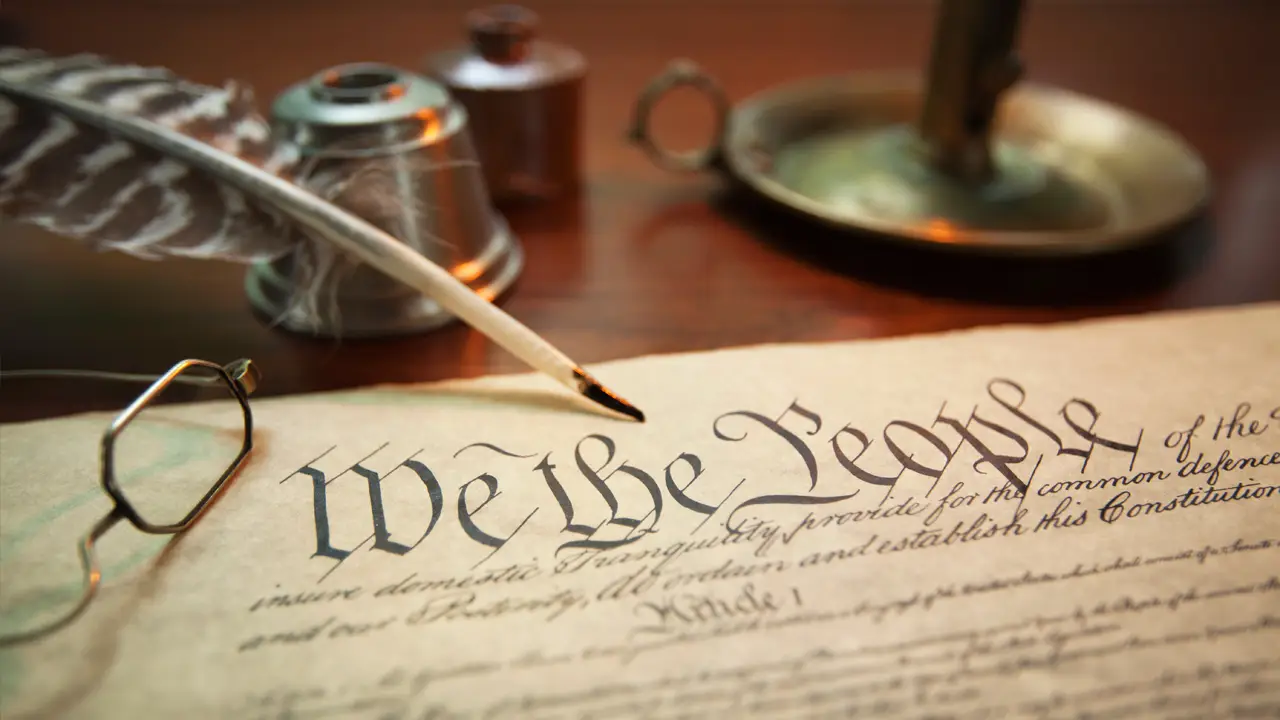
When you think of the Constitution, you might think of a complex, hard-to-understand, stuffy old law. In reality, it is fairly straightforward without a lot of the legal jargon that is made in today’s contracts. However, parts of it can be more difficult to understand. This is the second of a four-part series where we will attempt to simplify the Constitution. That way it is not only easier for us to understand, but also to teach.
You can access part 1 about Congress, here.
You can access part 2 about the Presidency, here.
You can access part 3, about the Judiciary, here.
Understanding Articles 4 through 7 of the U.S. Constitution:
A Simple Guide
The foundational document that outlines how our government operates and protects our rights as citizens is the Constitution. The first 3 Articles cover the 3 branches of our federal system: Legislative, Executive and Judicial. Many people are familiar with these articles. However, Articles 4 through 7 are equally important. These sections focus on relations between the states, the amendment process, and other key aspects of how our government and the Constitution itself works.
Article 4: Relations Among the States
Article 4 of the Constitution focuses on how states interact with each other and how they maintain their relationships within the United States. Here are the main points from Article 4:
Full Faith and Credit:
Each state must respect the laws, records, and court decisions of other states. For example, if you get married in one state, other states must recognize that marriage. This is important for maintaining consistent legal rights across the country.
Citizens
Citizens of each state have the same rights as citizens of other states. This means that if you move to a different state, you cannot be treated unfairly because you are from another state. You have the same rights and protections.
Extradition
If a person commits a crime in one state and then flees to another state, the state where the crime happened can request that the person be returned (or extradited) to face charges. This helps ensure that justice is served, even if someone tries to escape to another state.
How We Get New States
Article 4 allows for the creation of new states. However, no new state can be formed within the boundaries of an existing state without the approval of that state. This ensures that current states have a say in changes to their territory.
Protections and Guarantees
The federal government promises to protect each state from invasion and domestic violence. This means that if a state is threatened by outsiders or has an internal conflict, the federal government can help.
Article 5: Amendment Process
The Framers knew that the Constitution would need to be changed from time to time and so they created a way for it to be amended. Amendments are important because they allow the Constitution to evolve and adapt to new ideas, challenges, and societal changes.
Amendments Can Be Proposed In Two Ways.
- By Congress: A two-thirds majority vote in both the House of Representatives and the Senate is required to propose an amendment.
- By a Constitutional Convention: If two-thirds of the state legislatures call for a convention, amendments can also be proposed there. This method has never been used since the Constitution was created, but is part of the process.
Ratifying Amendments Can Happen In Two Ways.
- By State Legislatures: Three-fourths (or 38 out of 50) of the state legislatures must vote to approve the amendment.
- By State Conventions: Alternatively, three-fourths of states can hold conventions to ratify the amendment. This method was used for the 21st Amendment, which ended Prohibition.
Limitations on Amendments
There are some limitations on amendments. For example, no amendment can change the equal representation of states in the Senate without the consent of those states.
Article 6: Supremacy of the Constitution
Article 6 establishes the supremacy of the Constitution and sets the stage for how it interacts with state laws.
- Supreme Law of the Land: The Constitution is the highest law of the land. This means that no law made by Congress, nor any state law, can go against what is written in the Constitution. If there is a conflict between federal law and state law, federal law takes precedence.
- Oath of Office: All members of the government, including Senators, Representatives, the President, and judges, must take an oath to support the Constitution. This reinforces the importance of the Constitution in guiding government officials.
- No Religious Test: Article 6 states that there cannot be a religious test for holding public office. This means that people cannot be required to adhere to a specific religion or belief system to serve in government.
Article 7: Ratification of the Constitution
Article 7 covers the process through which the Constitution itself was ratified.
- Ratification Process: The Constitution would become effective once it was ratified by nine states. This was necessary to ensure that the new government could begin functioning under the new framework.
- State Conventions: Each state held its own convention to debate and vote on the Constitution. This allowed citizens and their representatives to discuss the document and voice their opinions, both in favor and against it.
- Signatures: Article 7 concludes with the names of the delegates who signed the Constitution on September 17, 1787. Their signatures represented the agreement of the states to the new governing document.
Conclusion
Articles 4 through 7 of the U.S. Constitution play a critical role in shaping the framework of our government and defining the relationships between states, the amendment process, and the overarching authority of the Constitution itself.
Article 4 focuses on ensuring that states interact fairly and respectfully, while also protecting states and their citizens.
Article 5 provides a clear method for amending the Constitution, allowing it to grow and change when needed.
Article 6 establishes the Constitution as the supreme law of the land and ensures a commitment to its principles from all government officials.
Article 7 explains the ratification process that made the Constitution the law of the land.
A better understanding of these articles helps We the People to better grasp the importance of collaboration, fairness, and the rule of law in the democratic processes of our republic.
As we continue to engage with the Constitution, we see how its principles remain relevant today, guiding our society and its governance. The Constitution is not just a historical document; it is a living framework that continues to profoundly impact our lives and our liberty every day.

